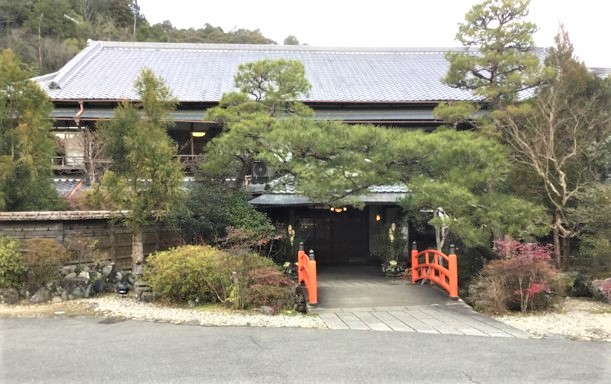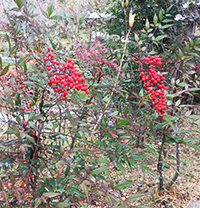Nanten-en and the Nandinas of Amami
Nanten-en Ryokan

The main building of the Nanten-en Ryokan was originally built in the year 2 of the Taisho period (1913) as a “Family hot spring” annex in Ohama of Sakai city, and relocated to Amami area in the year 10 of the Showa period (1935). The main building is one of the few and rare traditional Japanese style architectural works surviving in Japan designed by the architect Kingo Tatsuno, the pioneer of the modern Japanese architecture of Meiji and Taisho period. His representative works are the Tokyo Station and the Bank of Japan. In the year 15 of the Heisei period (2003) it was nationally listed as a Tangible Cultural Property, and still today many local visitors as well as those from foreign countries, come to stay in this hot spring ryokan, to enjoy the Japanese cuisine and the unique view of the garden and the Kongo Katsuragi mountain range.
The Nandinas of Amami

The nandina is a plant that bears bright red berries when the weather gets cold in the mornings and evenings. The Nandinas of Amami are counted as one of the Kawachinagano’s best scenic spots, as they give a good impression with lots of bright and red berries in bunches in winter, when the scenery is sad with dead leaves. Nandinas are well known as the raw material for the throat drops (nodo ame) and Chinese medicine effects. But also, they are used as flower arrangements in New Year season, as a symbol of good luck, as it means “turning misfortune” (nan wo tenzuru).
(A contribution from Nanten-en Ryokan)